Serving 667 students in grades 4-8, Shepherd Junior High School ranks in the bottom 50% of all schools in Arizona for overall test scores (math proficiency is bottom 50%, and reading proficiency is bottom 50%).
The percentage of students achieving proficiency in math is 22% (which is lower than the Arizona state average of 35%). The percentage of students achieving proficiency in reading/language arts is 36% (which is lower than the Arizona state average of 40%).
The student:teacher ratio of 20:1 is higher than the Arizona state level of 17:1.
Minority enrollment is 44% of the student body (majority Hispanic), which is lower than the Arizona state average of 66% (majority Hispanic).
Quick Stats (2025)
- Grades: 4-8
- Enrollment: 667 students
- Student:Teacher Ratio: 20:1
- Minority Enrollment: 44%
- Overall Testing Rank: Bottom 50% in AZ
- Math Proficiency: 22% (Btm 50%)
- Reading Proficiency: 36% (Top 50%)
- Science Proficiency: 23% (Top 50%)
- Source: National Center for Education Statistics (NCES), AZ Dept. of Education
School Overview
Shepherd Junior High School's student population of 667 students has stayed relatively flat over five school years.
The teacher population of 34 teachers has stayed relatively flat over five school years.
Grades Offered
Grades 4-8
Total Students
667 students

Gender %
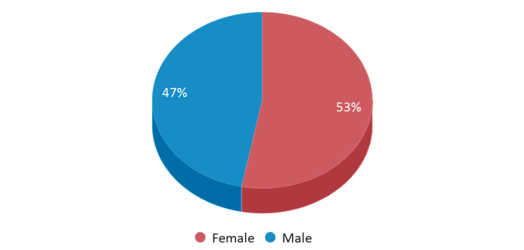
Total Classroom Teachers
34 teachers
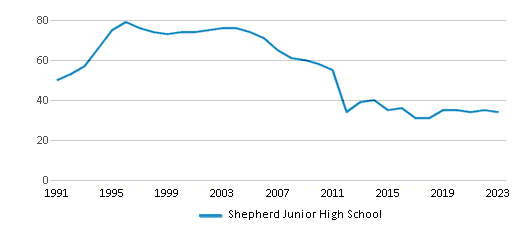
Students by Grade

School Calendar
School Rankings
Shepherd Junior High School ranks within the bottom 50% of all 1,956 schools in Arizona (based off of combined math and reading proficiency testing data).
The diversity score of Shepherd Junior High School is 0.59, which is less than the diversity score at state average of 0.66. The school's diversity has stayed relatively flat over five school years.
Overall Testing Rank
#1096 out of 1956 schools
(Bottom 50%)
(Bottom 50%)

Math Test Scores (% Proficient)
22%
35%

Reading/Language Arts Test Scores (% Proficient)
36%
40%

Science Test Scores (% Proficient)
23%
24%
Student : Teacher Ratio
20:1
17:1
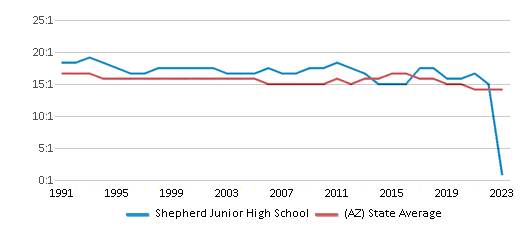
American Indian
2%
5%

Asian
1%
3%

Hispanic
32%
48%

Black
3%
6%
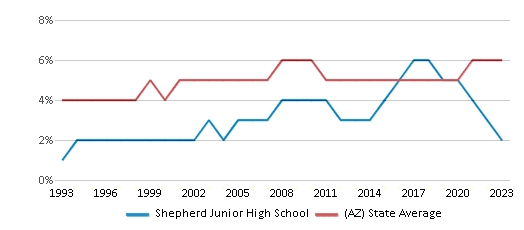
White
56%
34%
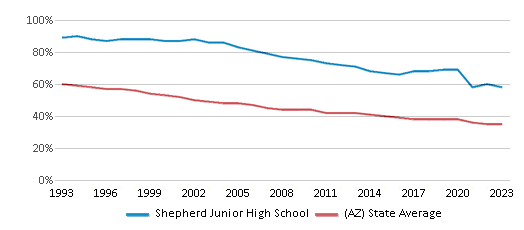
Hawaiian
1%
n/a
Two or more races
5%
4%

All Ethnic Groups
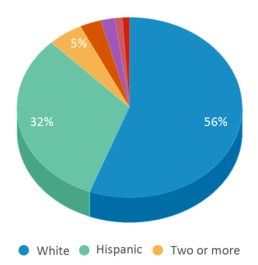
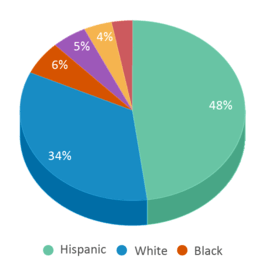

Eligible for Free Lunch
33%
40%

Eligible for Reduced Lunch
7%
10%

School Statewide Testing
School District Name
Source: National Center for Education Statistics (NCES), AZ Dept. of Education
Profile last updated: 02/09/2025
Frequently Asked Questions
What is Shepherd Junior High School's ranking?
Shepherd Junior High School is ranked #1096 out of 1,956 schools, which ranks it among the bottom 50% of public schools in Arizona.
What schools are Shepherd Junior High School often compared to?
Shepherd Junior High Schoolis often viewed alongside schools like Fremont Junior High School by visitors of our site.
What percent of students have achieved state testing proficiency in math and reading?
22% of students have achieved math proficiency (compared to the 35% AZ state average), while 36% of students have achieved reading proficiency (compared to the 40% AZ state average).
How many students attend Shepherd Junior High School?
667 students attend Shepherd Junior High School.
What is the racial composition of the student body?
56% of Shepherd Junior High School students are White, 32% of students are Hispanic, 5% of students are Two or more races, 3% of students are Black, 2% of students are American Indian, 1% of students are Asian, and 1% of students are Hawaiian.
What is the student:teacher ratio of Shepherd Junior High School?
Shepherd Junior High School has a student ration of 20:1, which is higher than the Arizona state average of 17:1.
What grades does Shepherd Junior High School offer ?
Shepherd Junior High School offers enrollment in grades 4-8
What school district is Shepherd Junior High School part of?
Shepherd Junior High School is part of Mesa Unified District (4235) School District.
In what neighborhood is Shepherd Junior High School located?
Shepherd Junior High School is located in the Alta Mesa Community Association neighborhood of Mesa, AZ. There are 1 other public schools located in Alta Mesa Community Association.
School Reviews
5 3/30/2009
I love going to Shepherd Jr. High. There's so many things to do and I actually learn something. The teachers are absolutely amazing and I would never want to transfer. Shepherd is amazing! Go band geeks, NAL Nerds, and etc.
5 7/1/2007
Overall I would say the quality of the academics are good. There is a small range of level however; it is pretty much advanced or normal. You choose one path and stay on it for the rest of your three years at the school. Everyone has a chance to be on either a sport, involved in the performing arts, extra electives, or all three. There is not awide range of extra curriculars. Most students are either on a sport of performing art field. If neither than its probably student council or the school's National Junior Honor Society. Every year 9th graders are always awarded with awards in all academic subjects, sports, and music. Some 8th graders are also involved.I would let everyone know that this school is pretty well rounded except they are extremely strict! When I was a student landyards had to be worn at all times and consequences such as detention followed if you didn't have it with you. Security is tight and there is not much room to roam around the school. I have heard that every year the school gets more and more controlling.
Review Shepherd Junior High School. Reviews should be a few sentences in length. Please include any comments on:
- Quality of academic programs, teachers, and facilities
- Availability of music, art, sports and other extracurricular activities
Recent Articles

What Is A Charter School?
Explore the world of charter schools in this comprehensive guide. Learn about their history, how they operate, and the pros and cons of this educational innovation. Discover key facts about charter schools, including admission policies, demographics, and funding, as well as what to look for when considering a charter school for your child.

10 Reasons Why High School Sports Benefit Students
Discover the 10 compelling reasons why high school sports are beneficial for students. This comprehensive article explores how athletics enhance academic performance, foster personal growth, and develop crucial life skills. From improved fitness and time management to leadership development and community representation, learn why participating in high school sports can be a game-changer for students' overall success and well-being.

February 05, 2025
Understanding the U.S. Department of Education: Structure, Impact, and EvolutionWe explore how the Department of Education shapes American education, from its cabinet-level leadership to its impact on millions of students, written for general audiences seeking clarity on this vital institution.








